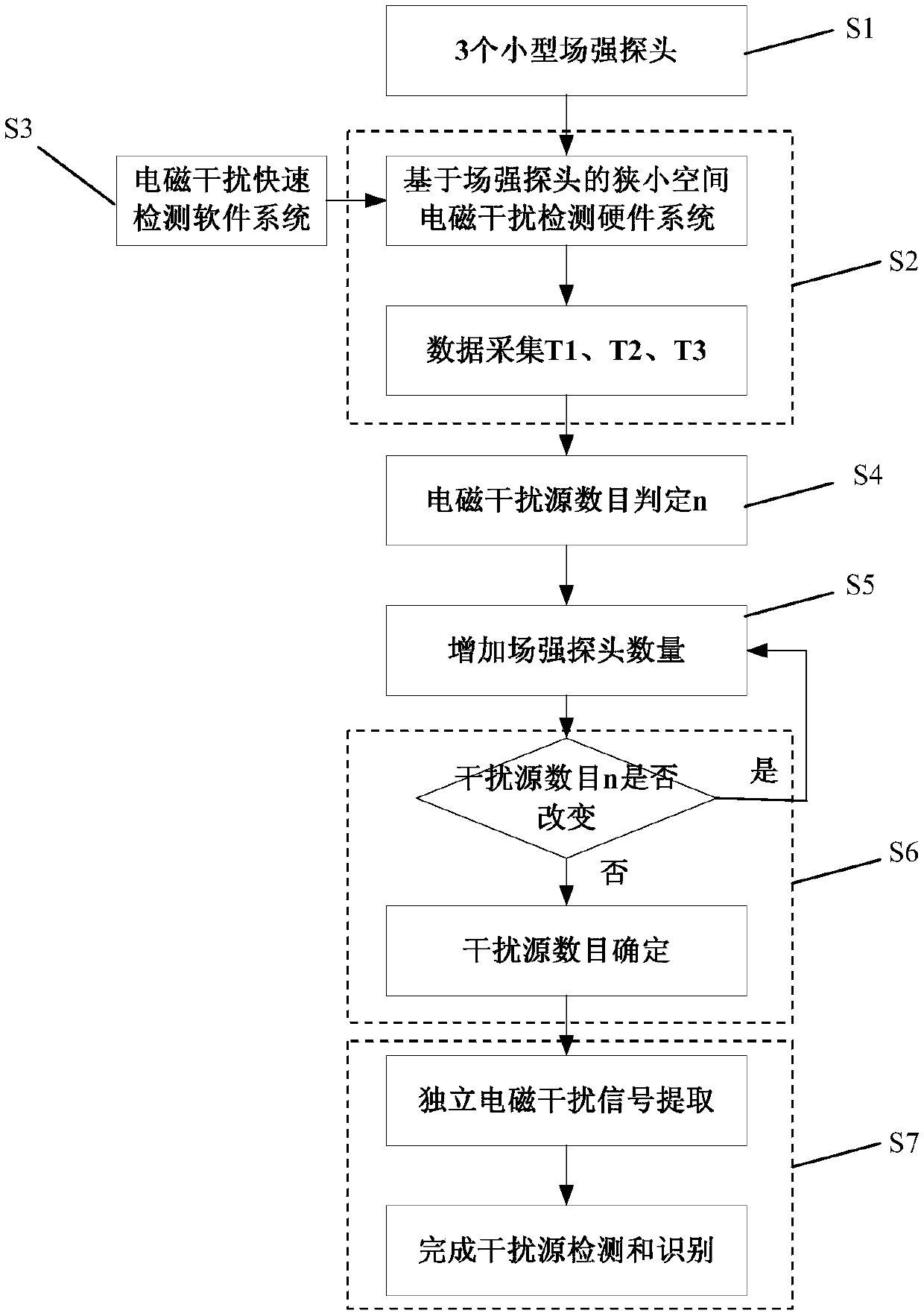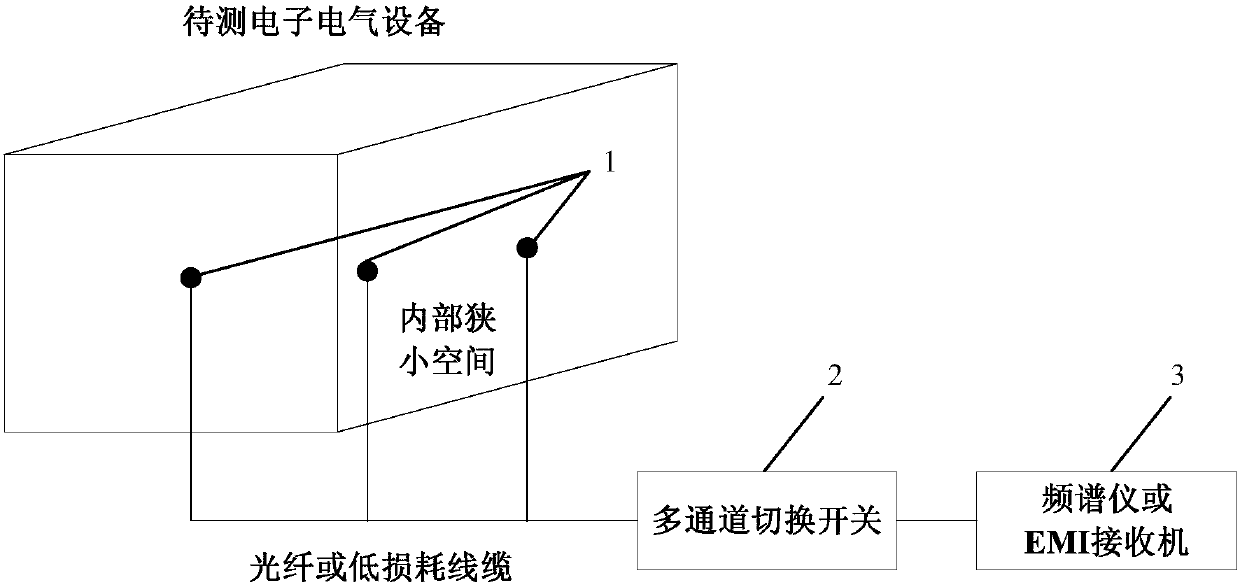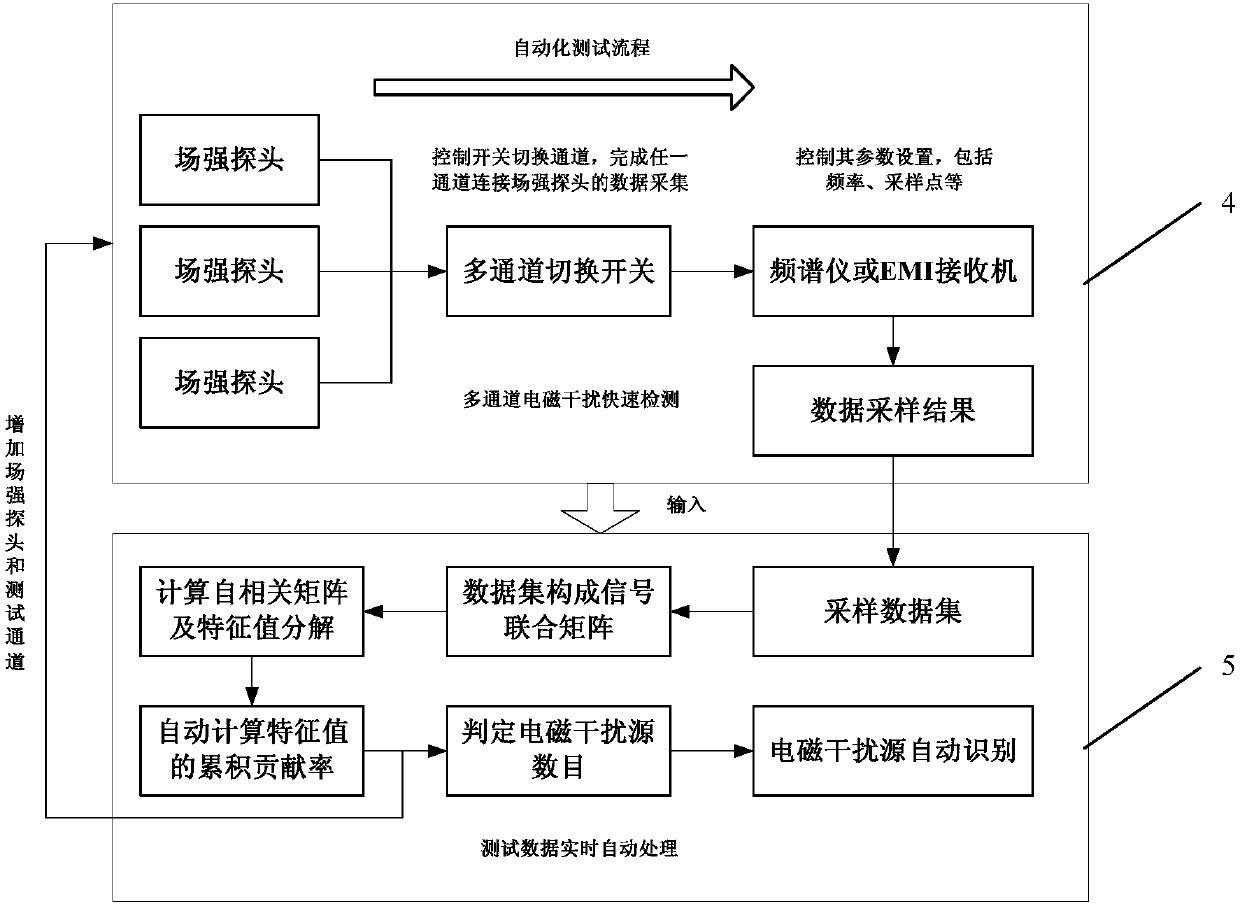Rapid detection and recognition method for electromagnetic interference in narrow and small spaces
A technology of electromagnetic interference and narrow space, which is applied in the direction of measuring interference from external sources, measuring electricity, and measuring devices. It can solve the problems of single channel, low test efficiency, and large manpower and time consumption, so as to simplify the test procedure and improve the test. Efficiency, optimize the effect of the testing process
- Summary
- Abstract
- Description
- Claims
- Application Information
AI Technical Summary
Problems solved by technology
Method used
Image
Examples
Embodiment Construction
[0037] The present invention will be further elaborated below by describing a preferred specific embodiment in detail in conjunction with the accompanying drawings.
[0038] like Figure 1~3 As shown, the present invention proposes a method for fast detection and identification of electromagnetic interference in a narrow space, which is characterized in that it includes the following steps:
[0039] S1, select data acquisition sensor 1;
[0040] S2. In the initial stage, place data acquisition sensors 1 at three different positions in the small space. Preferably, the data acquisition sensors 1 are small field strength probes, which are scattered as far as possible in the small space inside the electronic and electrical equipment to be tested. layout, and input the test data acquisition results of the data acquisition sensors 1 in different positions into the spectrum analyzer or the EMI receiver 3, so as to build a fast detection hardware test system for electromagnetic inter...
PUM
 Login to View More
Login to View More Abstract
Description
Claims
Application Information
 Login to View More
Login to View More - R&D
- Intellectual Property
- Life Sciences
- Materials
- Tech Scout
- Unparalleled Data Quality
- Higher Quality Content
- 60% Fewer Hallucinations
Browse by: Latest US Patents, China's latest patents, Technical Efficacy Thesaurus, Application Domain, Technology Topic, Popular Technical Reports.
© 2025 PatSnap. All rights reserved.Legal|Privacy policy|Modern Slavery Act Transparency Statement|Sitemap|About US| Contact US: help@patsnap.com



